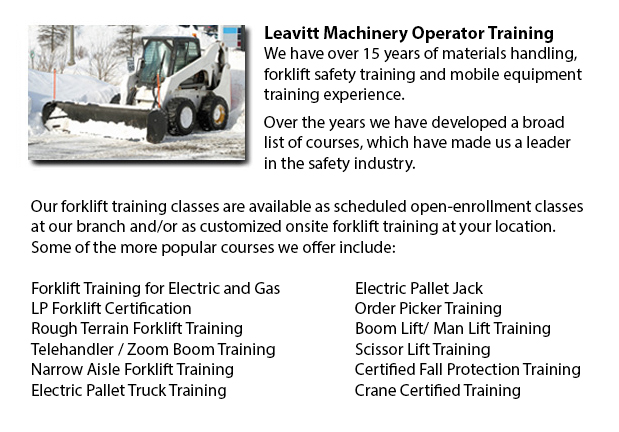
Skid Steer Ticket Fort Mcmurray - The lift arms on the skid-steer loader are located beside the driver together with pivots at the back of the driver's shoulders. These features makes the skid-steer loader different compared to the conventional front loader. Because of the operator's closeness to moving booms, early skid loaders were not as safe as conventional front loaders, specially in the operator's entry and exit. Today's' modern skid-steer loaders have various features to be able to protect the driver like for example fully-enclosed cabs. Like other front loaders, the skid-steer model can push materials from one place to another, is capable of loading material into a truck or trailer and could carry material in its bucket.
Operation
Many times a skid-steer loader could be used on a jobsite rather than a large excavator by digging a hole from the inside. To start with, the skid-steer loader digs a ramp leading to the edge of the desired excavation, and then it makes use of the ramp to be able to excavate material out of the hole. As the excavation deepens, the machinery reshapes the ramp making it steeper and longer. This is a very functional technique for digging below a building where there is not adequate overhead clearance for the boom of a big excavator. For example, this is a common situation when digging a basement underneath an existing house or structure.
There is much flexibility in the attachments which the skid steer loaders are capable of. For example, the conventional bucket of many of these loaders could be replaced with several accessories which are powered by the loader's hydraulic system, consisting of tree spades, sweepers, mowers, snow blades, cement mixers, pallet forks and backhoes. Various other popular specialized buckets and attachments consist of wood chipper machines, grapples, tillers, stump grinder rippers, wheel saws, snow blades, trenchers, angle booms and dumping hoppers.
History
During 1957, the very first front-end, 3-wheeled loader was invented in Rothsay, Minnesota by brothers Cyril and Louis Keller. The brothers invented the loader in order to help a farmer mechanize the process of cleaning turkey manure from his barn. This particular equipment was compact and light and included a rear caster wheel which enabled it to turn around and maneuver within its own length, allowing it to perform similar tasks as a traditional front-end loader.
The Melroe brothers of Melroe Manufacturing Company in Gwinner, N.D. obtained in 1958, the rights to the Keller loader. The business then hired the Keller brothers to assist with development of the loader. The M-200 Melroe was actually the end result of this partnership. This model was a self-propelled loader that was launched to the market in 1958. The M-200 Melroe featured a two independent front drive wheels, a rear caster wheel, a 12.9 HP engine and a 750 lb lift capacity. By nineteen sixty, they replaced the caster wheel with a back axle and launched the very first 4 wheel skid steer loader which was known as the M-400.
The M-400 shortly became the Melroe Bobcat. Normally the term "Bobcat" is used as a generic term for skid-steer loaders. The M-440 was powered by a 15.5 HP engine and had 1100 lb rated operating capacity. The business continued the skid-steer development into the middle part of the nineteen sixties and introduced the M600 loader.
-
Telehandler Training Fort Mcmurray
Telehandler Training Fort Mcmurray - Telehandlers or also called Telescopic handlers are very popular piece of heavy construction equipment most often utilized in agriculture and construction industries. These machines have extreme reaching capabilit... More -
Counterbalance Forklift Training Fort Mcmurray
Counterbalance Forklift Training Fort Mcmurray - Counterbalance Forklift Training courses are always in high demand. The Counterbalance forklift is a forklift that is made along with a weight that counters the balance, evenly spreading the weight of... More -
Heavy Equipment Training School Fort Mcmurray
Heavy Equipment Training School Fort Mcmurray - HEO or the heavy equipment operator courses will provide you with the knowledge and skills required in order to enter the workforce as an entry level heavy machine operator. In this 12 week course in ad... More -
Operator Safety Training, Re-Qualification Training, In-House Instructor Training in Fort McMurray
Used in just about all boat yards, industrial construction sites or warehouse operations, the forklift is a very important component in order to help pick up and transfer supplies. The reach feature of a lift truck could help improve the applications... More -
Heavy Equipment License Fort Mcmurray
Heavy Equipment License Fort Mcmurray - A heavy equipment license can be obtained by finishing a certification and preparation course at a private training school or a vocational school. This license would qualify you to operate various types of heav... More -
Boom Lift License Fort Mcmurray
Boom Lift License Fort Mcmurray - To operate an aerial boom lift, operators must be licensed through training that can be obtained utilizing both practical training and classroom sessions and by obtaining a boom lift license. Instruction must be give... More -
Skid Steer Loader Training in Fort McMurray
A skid-steer loader is actually an engine powered machine that consists of a small and rigid frame. It is outfitted along with lift arms which are used to attach to different labor saving attachments and tools. Normally, skid-steer loaders are four-w... More -
Order Picker Ticket Fort Mcmurray
Order Picker Ticket Fort Mcmurray - Order picker's enables warehouse employees to lift pallets using forks. Likewise called a stock picker, this electrically-powered equipment is like a forklift except that an order picker is likewise utilized to lif... More

Forklift Training Fort McMurray
TOLL FREE: 1-888-254-6157
Fort McMurray, Alberta
forklifttrainingfortmcmurray.com
Email Us
About Us


